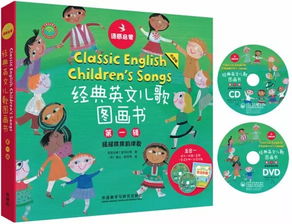婴儿早教英文儿歌大全100首
Title: Early Childhood Education through English Nursery Rhymes
Introduction:
Early childhood education plays a crucial role in a child's development, and nursery rhymes are an integral part of it. In this article, we will explore the significance of using English nursery rhymes for early childhood education and provide some popular examples along with their benefits.
Importance of English Nursery Rhymes in Early Childhood Education:
English nursery rhymes serve as powerful tools for early childhood education due to several reasons:
1.
Language Development:
Nursery rhymes expose children to the sounds and rhythms of the English language from an early age, aiding in language development and phonemic awareness.2.
Vocabulary Building:
Rhymes often contain simple and repetitive words, helping children expand their vocabulary in an enjoyable and memorable way.3.
Cognitive Skills:
Singing nursery rhymes enhances cognitive skills such as memory, attention, and sequencing as children learn to remember lyrics and follow the sequence of verses.4.
Social and Emotional Development:
Group singing promotes social interaction and cooperation among children. It also evokes emotions and fosters empathy as children engage with the stories and characters in the rhymes.5.
Cultural Understanding:
Many nursery rhymes have historical or cultural significance, introducing children to different aspects of society and tradition.Popular English Nursery Rhymes:
1.
"Twinkle, Twinkle, Little Star"
:Benefit: Enhances auditory discrimination and introduces basic astronomy concepts.
Lyrics:
```
Twinkle, twinkle, little star,
How I wonder what you are!
Up above the world so high,
Like a diamond in the sky.
```
2.
"Old MacDonald Had a Farm"
:Benefit: Teaches animal names and their sounds, fostering language development.
Lyrics:

```
Old MacDonald had a farm,
EIEIO.
And on his farm, he had a cow,
EIEIO.
With a moomoo here and a moomoo there,
Here a moo, there a moo, everywhere a moomoo.
Old MacDonald had a farm,
EIEIO.
```
3.
"Humpty Dumpty"
:Benefit: Encourages rhyme and rhythm recognition, and introduces basic narrative elements.
Lyrics:
```
Humpty Dumpty sat on a wall,
Humpty Dumpty had a great fall.
All the king's horses and all the king's men
Couldn't put Humpty together again.
```
4.
"Row, Row, Row Your Boat"
:Benefit: Develops coordination and rhythm as children engage in hand motions.
Lyrics:
```
Row, row, row your boat,
Gently down the stream.
Merrily, merrily, merrily, merrily,
Life is but a dream.
```
Guidelines for Incorporating Nursery Rhymes into Early Childhood Education:
1.
Make it Interactive:
Encourage children to participate by singing along, clapping, or acting out the rhymes.2.
Repeat Often:
Repetition is key to learning, so repeat rhymes frequently to reinforce language and concepts.3.
Use Visual Aids:
Incorporate visuals like pictures, puppets, or props to make the rhymes more engaging and memorable.4.
Connect with Activities:
Integrate nursery rhymes with related activities such as crafts, storytelling, or games to provide a holistic learning experience.5.
Personalize Learning:
Tailor the selection of nursery rhymes to children's interests and cultural backgrounds to make learning meaningful and relatable.Conclusion:
English nursery rhymes are invaluable resources for early childhood education, offering numerous benefits for children's linguistic, cognitive, social, and emotional development. By incorporating these rhymes into daily routines, educators and parents can lay a strong foundation for lifelong learning and language proficiency in children.
关键词:婴儿启蒙英语儿歌婴儿早教英语歌曲在线播放婴儿早教儿歌英文翻译婴儿早教英文儿歌大全100首